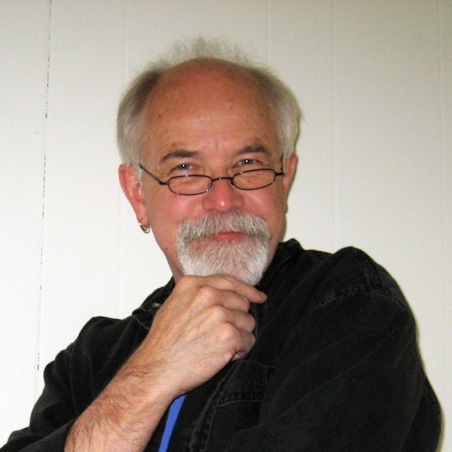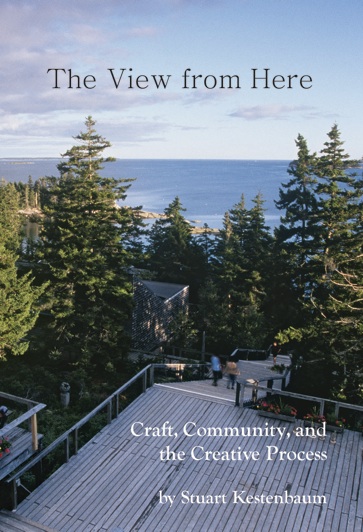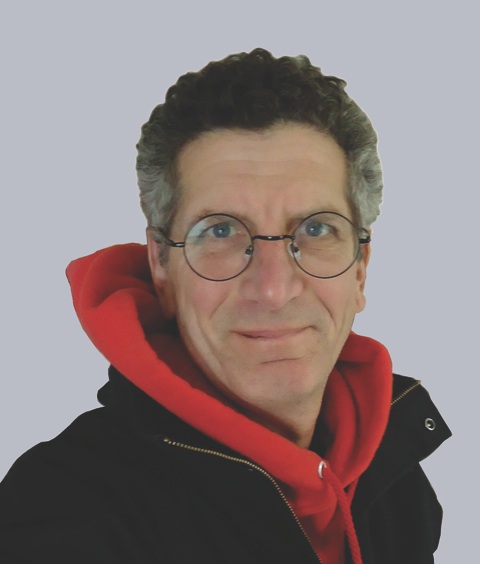Most people who follow Maine writers know Stuart Kestenbaum as a poet. He is the author of three collections of poems, “Pilgrimage,” “House of Thanksgiving” and “Prayers and Run-on Sentences.”
Garrison Keillor has featured Kestenbaum’s poems many times on his radio program, “The Writer’s Almanac.”
Those who are active in Maine’s art scene probably know Kestenbaum as the director of Haystack Mountain School of Crafts in Deer Isle. Since 1988, he has led Haystack on its road to an international reputation for its ability to offer craft artists the finest opportunities to learn and tap their creative impulses.
Kestenbaum recently collaborated with Harpswell metalsmith and book publisher Tim McCreight on a volume that brings together not Kestenbaum’s poems, but essays he has written about craft, community and the creative process. It also includes the texts of three keynote speeches.
“The View from Here,” published by McCreight’s Brynmorgen Press, springs from Kestenbaum’s role at Haystack. He writes a twice-yearly column for the Haystack newsletter, Gateway. The column is fueled by thoughtful observations from his unique perch on the coast of Maine.
“The View from Here” is very much a collaboration between the two. Kestenbaum provided the words, and McCreight molded those words into a handsomely designed volume that also is available as an iBook.
We spoke with both men last week.
Q: What was the idea behind this book? How did it come to be? Tim, did you urge Stu to collect his writings? Stu, was this an idea that has percolated for some time?
A: SK: I’ve been writing the columns since 1989, and began to think about publishing them as a group. I approached Tim, who responded enthusiastically. We did give some thought to revising the pieces — editing them so they might be less Haystack-specific — but in the end decided that there was a continuity to the work the way it was.
Concurrent with the columns, I had also been writing about craft and creativity, usually at talks given at art schools and conferences, that were a more expansive format.
TM: Stu has been a friend for several decades, and I have always been a fan of his writing. He has the poet’s ability to help us see the common moments of our lives with clarity and, in his case, often with fondness. As a member of the Haystack community, I have read Stu’s biannual messages in the school’s newsletter for many years. I wish I could take credit for the idea to gather them into a book, but that thought came from the author. I will, however, take credit for quickly saying that it was a good idea.
As Stu mentioned, I wondered if there was some virtue in editing the pieces to filter out references to the Haystack school and Deer Isle, Maine. Stu was patient enough to allow me to do this — an exercise that quickly demonstrated that the essays were of a piece with the place for which they were written. They are contained in this book in exactly the same form as they first appeared.
Because the essays span a 20-year time-frame, they allow us to see not only the progression of a writer’s skill, but the evolution of a creative individual settling into his community and his professional life.
Q: There is a certain seasonal flow to these essays that feels comforting. They are imbued with a sense of place and a sense of purpose. What is the influence of that place on your writing?
A: SK: The sense of place is essential to my writing. The details ground me. Thinking back to when I first moved to Deer Isle, I was so struck by the sense of community, both at Haystack and on the island. I think the common sense of both craft and rural living has found a way into my work.
Q: What is your writing ritual?
A: SK: I tend to be a morning writer. My associative process is more fluid that time of day. I definitely want to write from a place where I can make leaps between ideas, and that’s the best time of day for me.
Of course, I also have to write other times of day and for specific deadlines, like getting a column written. In that case, the deadline is a great inspiration. I think nothing aids a creative process like a deadline.
Q: We know you as a poet, mostly. What are the challenges of writing prose?
A: SK: More and more, I’m drawn to the short prose form. I want the work to have a flow similar to a poem, to take the reader to an unexpected place. I think the longer prose pieces can be more forgiving in the editing. I can have a poem fall apart if I can’t make certain transitions, but with prose, I feel that I have more room to maneuver.
I was a poet before I came to Haystack, but at Haystack, poetry has given me a way to complement the creative processes taking place in the studios. I began to see words as a material too — just the way a potter is in a relationship with clay. There’s a give and take, a partnership. I know that has informed my writing.
Q: Creativity is not a tangible thing. You cannot buy it, cannot turn it into a commodity. Haystack encourages creativity. It begs us to slow down, tune out and look inward. I’m interested in Haystack’s approach to creativity.
A: SK: While Haystack is craft-specific, it’s also about materials and creative process. I think that is at the heart of all of our programs. We’re never looking for finished products, but for the creative impulse that allows us to try something new, to find ourselves in a place we didn’t expect.
When people come to Haystack, they’re ready to make those creative leaps. They are part of a supportive community without the distractions of work, in a place that is specifically designed to foster studio work and creative expression. It’s a wonderful confluence of place and purpose.
Increasingly, as with Haystack’s latest involvement with MIT and new technologies, I’m seeing this creativity as a continuum. Humans can be ingenious in so many ways, whether it’s using the hand or a machine. And it’s creativity that joins us together.
Q: Tim, your thoughts on this? You have taught there, been there. You know about Haystack. What about that place lends itself to creative expression?
A: TM: One of the reasons to take on this project was the opportunity to work with Stu, but another reason was the opportunity to share with a larger audience the spirit of Haystack and the man who has shaped its character over the last two decades.
Brynmorgen Press is a small company known for instructional books on metalsmithing. It would be accurate to say that those books are what keep the lights on. But as a teacher and practicing artist, it has always been clear to me that the “why” of the creative process is more important than the “how.” For that reason, I am pleased to have the opportunity to augment our technical books with inspirational books like this one.
Q: I am interested in your design of this book, Tim. Brynmorgen has always distinguished itself by making handsome books. What was your design philosophy for this volume?
A: TM: As a book designer, my intention is always to humbly augment the work of the author. If a reader’s first reaction is to the design of the book rather than its content, I have failed. If, on the other hand, a reader enjoys the full experience of a book; if the look and feel seem consistent with the message, then I am pleased.
In “The View from Here,” it seemed important to have a book of intimate and portable scale, a book that could be easily tucked into a backpack or briefcase. Anyone who knows Stu will tell you of his soft-spoken demeanor, so the choice of a pale font and slightly old fashioned, duo-tone photographs seemed appropriate.
Q: In this time of e-books and advancing technology, it seems some publishers are putting high value on well-designed books that feel good in the hands. There is a tactile quality to certain books that feels different from books that are mass-produced. The book itself becomes a work of art, and something that is rewarding in and of itself to hold and to read. How are you embracing that idea in your work as a book designer and book publisher?
A: TM: “The View from Here” is also available as an iBook for iPad. In that format, it includes a video walk down the famous Haystack steps, and audio clips of the author reading several of his poems. For the many people who have made their iPad a constant companion, this means that these essays are always close at hand, on the ferry or the subway. The ability to search, annotate and copy portions gives the book a new versatility.
Staff Writer Bob Keyes can be contacted at 791-6457 or:
bkeyes@pressherald.com
Twitter: pphbkeyes
Send questions/comments to the editors.





